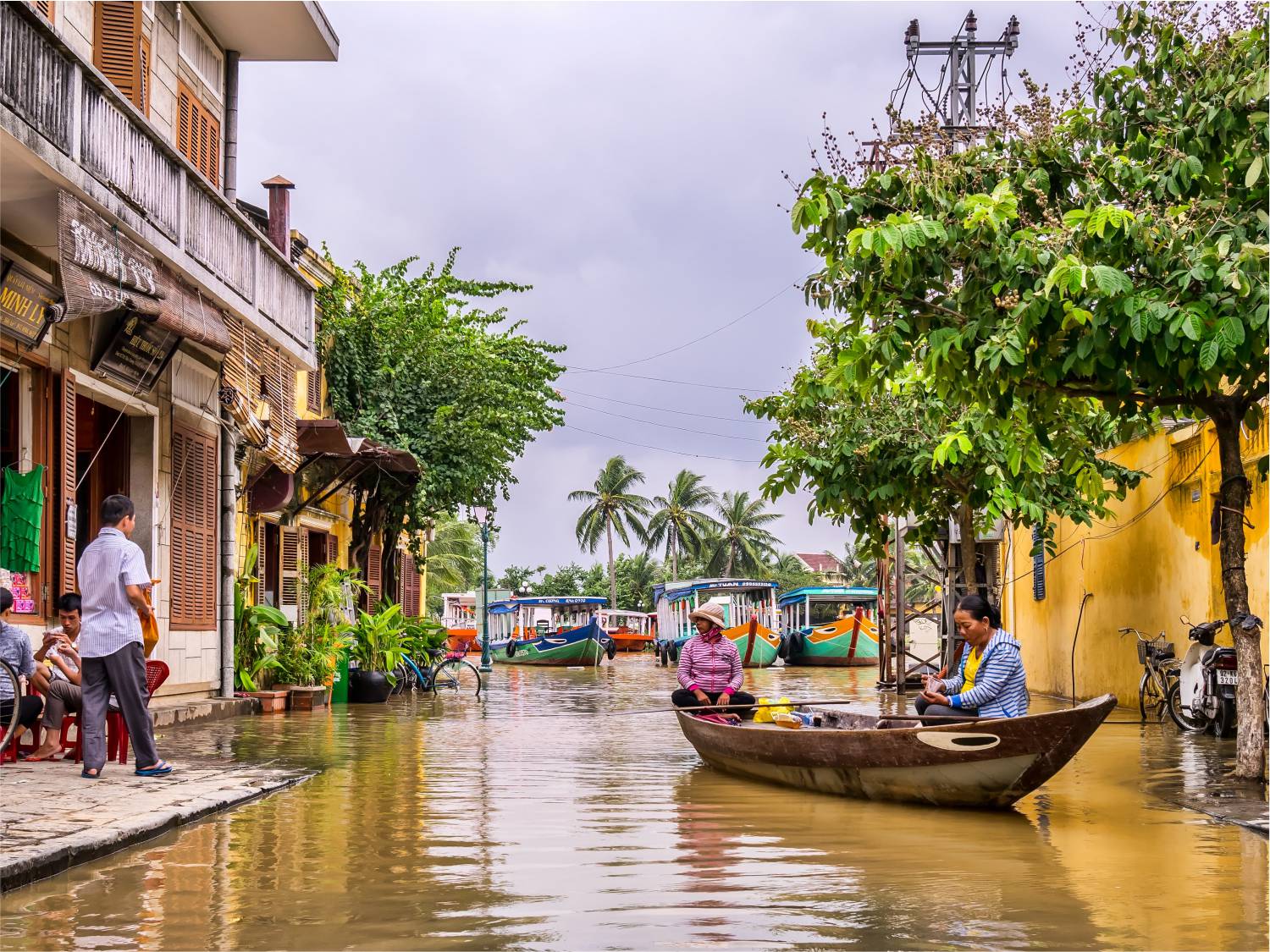
TIDAL FLOODING
INSIGHT INTO A UNIQUE PHENOMENON
For this Column Volume’s Insight, the AHA Centre invited a young contributor who was also one of its interns – Eviana Rosida – to develop an interesting and informative article. Evi’s current studies in disaster management see her focusing on the unique occurrence of tidal flooding, upon which she has developed this volume’s Insight article. For the ASEAN region, with a coastline 173,00 km in total length, and nine nations bordering the sea or having maritime zones, the potential for tidal flooding is significant. Increasing population density in coastal areas across the region also increases potential impact, while many high-density areas facing the sea are formed by coastal cities.
ABOUT TIDAL FLOODS
Tidal floods in coastal areas may happen due to the process of rising sea water, tidal waves (different from tsunami), the high flow of river water, or general sea level rises. Naturally, tropical cyclones can also trigger a tidal flood. A tidal flood is a flood due to the tidal process that inundates land/coastal areas that are located lower than the average sea level. Long ocean waves are related to tides, and are characterised by the rhythmic rise and fall of the sea surface after a period of several hours. A rising tide is usually referred to as the flow, while the decreasing tide is called the ebb.
There is also a connection between tides and the sun and moon. Tides are in their highest state when the moon is full or new, and high tidal times at a particular location can be estimated (but not exactly) associated with the position of the moon in the sky. Water at the end of the beach bordering the ocean never stays at a fixed height, but they always move up and down according to the tide cycle. These elements also have an impact on tidal flooding.
THE FORMATION OF TIDAL FLOOD PROCESS
As the tidal process undertakes its vertical movement of sea level, these shallow water waves are produced by the gravitational force of the moon and sun on the ocean. The intensity of the force varies according to the position of the moon, sun and earth, and as a result, large tides see the water (with the help of gravitational forces) flow into low places and fill the space, inundating these lower parts.
Tidal flood can be caused by anthropogenic activities, particularly due to land degradation. Human populations living in coastal areas result in high use of groundwater. This use of ground water that exceeds the limit of the groundwater’s ability to replenish is called exploitation, and can increase vulnerability to inundation due to tidal flooding. Tidal floods have hit several areas in Java, Indonesia for example, as the density of people who live on Java has an impact on land subsidence, with high groundwater exploitation causing water to easily inundate the land. The impact of tidal flood sees bodies of sea water causing damage to asphalt roads, and damage to motorised vehicles and bicycles. In addition, sea water that enters the land (sea water intrusion) causes the groundwater to taste salty, and meaning it cannot be used as raw material for drinking water or for daily needs. Salty groundwater can also have a significant negative effect on farming livelihoods in an inundated region.
TIDAL FLOOD PREVENTION
In the short-term, such events may be prevented by building dikes to withstand the tidal waves of sea water heading to the mainland. More long-term, the effect of tidal flooding can be reduced by planting mangroves. Mangrove forests play an important role as ocean wave breakers, retaining wind speeds, and as a habitat for various flora and fauna. Such biological prevention techniques can also be supported by physical development, such as building wall borders between sea and land to act as a wave breaker. Communities who live in coastal area must also be aware about rising sea levels, and reducing exploitation of groundwater so that land subsidence can be avoided.


